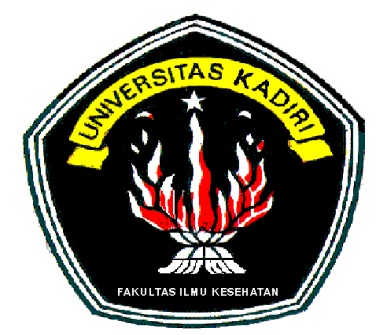genetics of semen production and its relationship with growth rate ll. tusell*, m. garcía-tomás, o. rafel, j. ramon, and m. piles unitat d
Genetics of semen production and its relationship with growth rate
Ll. Tusell*, M. García-Tomás, O. Rafel, J. Ramon, and M. Piles
Unitat de Cunicultura, Institut de Recerca i Tecnologia
Agroalimentàries, Torre Marimon s/n, 08140,
Caldes de Montbui, Barcelona, Spain
Abstract. This work aimed to estimate the genetic parameters of the
ejaculate volume (V), sperm concentration (C), individual sperm
motility (IM), and the subjective criteria of suitability for AI of
the ejaculate (U). The relationship between all of these traits with
the average daily gain (ADG), which is the selection criteria of
rabbit paternal lines, is also provided. A 38 % of the ejaculates were
rejected for AI, being the low IM score the main reason for rejection.
Semen production traits showed moderate values of heritability (0.14
and 0.32 for V and C, respectively) suggesting the possibility of
effective selection, especially for increasing C. Variables related
with the quality of the ejaculate (U and IM) were found to be low
heritable (0.06). Production of doses in the AI centers could be
enhanced by genetic selection for total number of sperm (the
combination of V and C). The ADG presented a heritability of 0.16
being positively and moderately correlated with C (0.36). However the
genetic correlation with V, U and IM cannot be considered to be
different from zero. Therefore, selection for increasing ADG would
have a favourable correlated response on sperm production and it is
not expected to affect volume and quality characteristics of the
ejaculate.
Keywords: semen production, ejaculate quality, growth, (co)variance
components, rabbit.
1 Introduction
Bucks used for AI in commercial farms should have a good genetic merit
for growth and feed efficiency but also good semen production and
quality in order to produce large number of doses, all of them
potentially fertile. In most of AI centers, decisions concerning
ejaculate suitability for AI are made taking into account the
evaluation of few seminal characteristics considered to be related
with male fertility. The final decision is performed by the technician
summarizing all the evaluated traits weighted in a subjective manner.
One of the most important and commonly tested traits is the sperm
motility score, evaluated in a subjective scale. The percentage of
useful for AI ejaculates combined with the sperm concentration and the
ejaculate volume determine the production of AI doses.
This work aimed to estimate the genetic parameters of the ejaculate
volume, sperm concentration, individual sperm motility, and the
suitability for AI of the ejaculate -which results of the subjective
combination of several quality traits- in order to examine the
possibility of genetic improvement for increasing AI dose production.
The genetic relationship between all of these traits with the average
daily gain, which is the selection criteria of rabbit paternal lines,
was also estimated with the objective of assessing a possible
correlated effect on semen production.
2 Methods
Data. Bucks belonged to the Caldes line which is selected for growth
rate during the fattening period. They were bred and reared on an
experimental farm belonging to IRTA in Caldes de Montbui (Barcelona).
After weaning at 32 d, males were housed in cages of eight individuals
with a photoperiod of 16 h light/d. Animals were fed ad libitum with a
commercial diet (15.5% crude protein, 2.3% fat, 17.2% fiber) until 60
d. After this period they were individually housed and fed restricted
to 180 g/d of another commercial diet (16% crude protein, 4.3 % fat,
17% fiber). Fresh water was always available. All males started the
training to artificial vagina at 4.5 months. One ejaculate per male
and per week was collected during two weeks. At 5 month of age males
started their reproductive life, and two ejaculates per male
________________________________________
* Corresponding author: [email protected]
and per week were collected, with an interval of 30 min between both
collections. Ejaculates containing urine and calcium carbonate
deposits were discarded. Gel plugs were removed. Ejaculates were
stored at 37ºC and were evaluated within no more than 15 min after
collection. Volume (V, mL) was determined either using a graduate tube
or a micro-pipette. For the evaluation of individual motility (IM)
ejaculates were diluted 1:4 in a commercial liquid extender. Then this
trait was assessed in aliquots (25μL) under a microscope with a
phase-contrast optic (Nikon, Lewisville, TX) at x400, according to a
subjective scale from 0 to 5. The suitability for AI of the ejaculate,
defined as a binary trait (U: 0 if it was rejected, 1 otherwise) was
assessed subjectively by the technician who considered for rejection
the presence of residuals of urine, blood, calcium carbonates
deposits, IM score < 2.5, presence of high number (> 50%) of dead
spermatozoa and presence of agglomerated spermatozoa. Sperm
concentration (C, x106 spermatozoids /mL) was measured in useful
ejaculates either in a Thoma Zeiss counting cell chamber or by using a
counter of sperm cells (NucleoCounter SP-100, www.chemometec.com).
A total of 13,644, 3,224, 13,121 and 14,247 data of V, C, IM and U,
respectively, were obtained. This data were recorded from December
2001 to December 2009 and involved 883 males. On the other hand, there
were a total of 118,306 data of average daily gain during the
fattening period (ADG). The pedigree included 118,574 animals.
Model and statistical analysis. Traits were analysed in different sets
of bivariate analysis all of them including the ADG, and containing
all the information of the selection process in order to avoid bias in
the estimates of the (co)variance components. Models were gaussian for
V, C, IM and ADG, and threshold for U.
The model assumed for the analysis of V, C, IM and the underlying
variable (l) of U was:
Where ys (s=V, IM, C and l) is the vector of data of the corresponding
seminal traits, βs is the vector of systematic effects, us is the
vector of male additive genetic effects, ps is the vector of male
non-additive genetic plus permanent environmental effects, cs is the
vector of common litter environmental effects and es is the vector of
residuals. Xs, Z1,s Z2,s and Z3,s are incidence matrices relating data
with the systematic, genetic and permanent environmental effects,
respectively. The systematic effects included in the model were: order
of the ejaculate (first or second), year-season at collection and male
age.
The following model was assumed for ADG:
Where βadg , uadg , cadg corresponded to the same effects than those
defined above for seminal traits. In order to increase the data
connectivity and allow estimating a possible environmental correlation
between both traits, residual was decomposed in two terms padg and eadg,
being the first one related with male permanent effect for the seminal
trait. Incidence matrices Xadg, Z1,adg, Z2,adg y Z3,adg relate data
with the systematic, genetic and permanent environmental effects,
respectively. The systematic effects included in the model were:
year-season of birth, parity order and number of kids born alive in
the litter where the individual was born.
The marginal posterior distributions of the variables of interest were
approximated using the Gibbs sampler algorithm. A single chain of
300,000 iterations was run. The first 100,000 iterations were
discarded, and samples of the parameters of interest were saved for
each of 100 iterations. The sampling variance of the chains was
obtained by computing Monte Carlo standard errors [8]. Statistical
from the marginal posterior distributions were calculated directly
from the samples saved.
3 Results and Conclusions
Summary statistics of seminal traits and average daily gain are shown
in Table 1.
Means of the different seminal traits are within the range of the
values obtained for rabbits in previous studies [1].
Table 1. Summary statistics of seminal traits and average daily gain
Trait
Min.
Median
Mean
Max.
Standard deviation
V1
0.01
1.00
0.96
3.00
0.53
C2
2.00
339.00
384.2
1616.0
243.13
IM3
0.5
3.0
2.8
5.0
0.93
ADG4
10.78
46.55
45.98
88.95
8.5
U5
62 % of ejaculates suitable for AI
1V: Ejaculate volume, 2 C: Sperm concentration, 3IM: Individual
motility, 4ADG: average daily gain, 5U: ejaculate usefulness for AI.
Although the rejection criteria differed between works, the obtained
62% of U is in agreement with the low efficiency in the production of
suitable for AI ejaculates obtained in rabbits [5, 7]. These results
suggest that the criteria for ejaculate rejection could be too
restrictive and/or that, in some cases, it could be necessary to
improve the qualitative characteristics of the ejaculate by management
procedures or by genetic selection. Low value for IM was the main
reason for ejaculate rejection (50% of the rejections were due to this
factor; see Figure 1). This trait has also found to have a clear
effect on male reproductive performance after AI [4, 10, 6].
Fig. 1. Relative importance of several causes of ejaculate rejection
for AI: presence of residuals of urine (Urine), calcium carbonate
deposits (Ca) and individual motility score lower than 2.5 (IM<2.5) in
a subjective scale from 0 to 5.
Table 2 shows features of the marginal posterior distributions of the
phenotypic variance, ratios of variances and correlations with ADG,
for all the studied traits. Semen production traits showed moderate to
high values of repeatability (0.29 and 0.60 for V and C, respectively)
indicating the existence of important individual variation for them.
The estimated heritabilities were moderate, which suggests the
possibility of effective selection especially for increasing C. The
heritabilities obtained here were higher than the estimates previously
reported by Brun et al. [3] in rabbit (0.06 for V and 0.10 for C)
whereas the permanent environmental male effect were similar: 0.16 and
0.21 for V and C, respectively. Bencheikh [2] estimated a
repeatability around 0.38 for V and 0.35 for C, and More O’Ferrall and
Meacham [11] obtained a value of 0.29 for V and 0.18 for total sperm
per ejaculate, all of them in rabbit. Variables related with the
quality of the ejaculate (U and IM) were found to be low repeatable
and heritable. Estimates reported by other authors in rabbit are in
agreement with these results for IM or mass motility [2, 3]. This
could be due in part to the great variability of these traits
originated by semen manipulation and time elapsed until evaluation,
but also the subjective nature of these traits. Thus, genetic
selection for these traits could not be effective in reducing the
amount of rejected ejaculates. Therefore, the production of doses in
the AI centers could be enhanced by genetic selection for total number
of sperm (the combination of V and C) and/or other seminal
characteristics better defining the quality of the ejaculate if they
were heritable.
The obtained heritability for ADG is also in accordance with estimates
obtained in other rabbit lines [9] and in the same line in a previous
study [13]. Selection for increasing this trait would have a
favourable correlated response on sperm production since the genetic
correlation between ADG and C was positive and moderate. The
correlation between ADG and V, U and IM cannot be considered different
from zero. Therefore, selection in the paternal lines of rabbits is
not expected to have any correlated effect on volume and the
qualitative characteristics of the ejaculate currently used as
criteria for rejection in the AI centres. These results agree with the
ones previously reported by Oh et al., [12] and Wolft [14] in pigs. Up
to our knowledge, there are no published estimates of genetic
correlation between growth and semen production in rabbits.
Table 2. Means (Highest posterior density interval at 95%) of the
posterior distributions of the heritability (h2), phenotypic variance
(σ2), ratios of variance of male permanent (pm) and common litter (co)
environmental effects, and genetic (rg) and phenotypical (r)
correlations between seminal traits and average daily gain
Parameter
Trait
h2
pm
co
σ2
rg (with ADG)
r (with ADG)
V1
0.14
(0.09,0.19)
0.15
(0.10,0.21)
0.03
(0.002,0.07)
0.28
(0.28,0.29)
-0.08
(-0.37,0.21)
-0.01
(-0.06,0.05)
C2
0.32
(0.22,0.41)
0.28
(0.20,0.37)
0.06
(0.02,0.11)
64803.80
(58754.10,71353.94)
0.36
(0.17,0.50)
0.07
(0.08,0.15)
IM3
0.06
(0.03,0.09)
0.11
(0.08,0.14)
0.02
(0.004,0.05)
0.86
(0.83,0.89)
-0.14
(-0.39,0.07)
-0.02
(-0.06,0.03)
U4
0.06
(0.02,0.09)
0.12
(0.08,0.15)
0.02
(0.004,0.05)
1.25
(1.22,1.29)
-0.08
(-0.27,0.10)
-0.03
(-0.07,0.01)
ADG5
0.16
(0.14,0.18)
0.34
(0.16,0.48)
0.29
(0.28,0.30)
52.06
(51.35,52.67)
-
-
1V: Ejaculate volume, 2 C: Sperm concentration, 3IM: Individual
motility, 4U: ejaculate usefulness for AI, 5ADG: average daily gain.
References
1. Alvariño, J. M. R. 2000. Reproductive performance of male rabbits.
Proc. 7th World Rabbit Congr., Valencia, Spain A:13-35.
2. Bencheikh, N. 1995. The effect of frequency of ejaculation on semen
characteristics and sperm output in the rabbit. Ann. Zootech.
44:263-279.
3. Brun, J. M., A. Sanchez, R. Duzert, G. Saleil, and M.
Theau-Clément. 2009. Paramètres génétiques des caractéristiques de la
semence de lapin. 13èmes Journ. Rech. Cunicole, Le Mans, France.
11:17-18.
4. Brun, J. M., M. Theau-Clement, and G. Bolet. 2002. The relationship
between rabbit semen characteristics and reproductive performance
after artificial insemination. Anim. Reprod. Sci. 70:139-149.
5. Brun, J. M., M. Theau-Clément, J. Esparbié, J. Falières, G. Saleil,
and C. Larzul. 2006. Semen production in two rabbit lines divergently
selected for 63-d body weight. Theriogenology 66:2165-2172.
6. Garcia-Tomás, M., J. Sanchez, O. Rafel, J. Ramon, and M. Piles.
2006a. Reproductive performance of crossbred and purebred male
rabbits. Livestock Science 104:233-243.
7. Garcia-Tomás, M., J. Sanchez, O. Rafel, J. Ramon, and M. Plies.
2006b. Heterosis, direct and maternal genetic effects on semen quality
traits of rabbits. Livestock Science 100:111-120.
8. Geyer, C. J. 1992. Practical markov chain monte carlo. Stat. Sci.
7:473-511.
9. Larzul, C., Gondret, F. 2005. Genetics of growth traits and meat
quality in the rabbit. INRA Prod. Anim. 18(2):119-129
10. Lavara, R., E. Moce, F. Lavara, M. P. V. de Castro, and J. S.
Vicente. 2005. Do parameters of seminal quality correlate with the
results of on-farm inseminations in rabbits? Theriogenology
64:1130-1141.
11. More O'Ferrall, G. J., Meacham, T. N. 1968. Relationship between
pH , other semen traits and fertility in rabbits. VI6 Cong. Intern.
Reprod. Anim. Insem. Artif. Paris. 2:1279-1281.
12. Oh, S. H., M. T. See, T. E. Long, and J. M. Galvin. 2006.
Estimates of genetic correlations between production and semen traits
in boar. Asian-Australas J Anim Sci 19:160-164.
13. Piles, M., E. A. Gomez, O. Rafel, J. Ramon, and A. Blasco. 2004.
Elliptical selection experiment for the estimation of genetic
parameters of the growth rate and feed conversion ratio in rabbits. J.
Anim. Sci. 82:654-660.
14. Wolft, J. 2009. Genetic correlations between production and semen
traits in pig. Animal 3:1094-1099.
4
 KEYSTROKE DYNAMICS AUTHENTICATION FOR COLLABORATIVE SYSTEMS ROMAIN GIOT MOHAMAD
KEYSTROKE DYNAMICS AUTHENTICATION FOR COLLABORATIVE SYSTEMS ROMAIN GIOT MOHAMAD PASLUDINĀJUMS SV BRIGITAI JĒZUS SAKA ‘ZINI KA TIEM KAS
PASLUDINĀJUMS SV BRIGITAI JĒZUS SAKA ‘ZINI KA TIEM KAS 2 ON PREMI LITERARI DE “CONTES SOLIDARIS” L’ ONG
2 ON PREMI LITERARI DE “CONTES SOLIDARIS” L’ ONG PREPARING A VOICE SCALE LAMINATE THE VOICE SCALE
PREPARING A VOICE SCALE LAMINATE THE VOICE SCALE INFECTION PREVENTION AND CONTROL TRAINING GUIDE 2016 AVAILABLE FOR
INFECTION PREVENTION AND CONTROL TRAINING GUIDE 2016 AVAILABLE FOR UNIVERSITAS KADIRI 2016 PANDUAN PENELITIAN DOSEN KATA PENGANTAR
UNIVERSITAS KADIRI 2016 PANDUAN PENELITIAN DOSEN KATA PENGANTAR T ALLER FITNESS LABRANZA AGOSTO PLANIFICACION MUJER Y DEPORTES
T ALLER FITNESS LABRANZA AGOSTO PLANIFICACION MUJER Y DEPORTES JOB DESCRIPTION FOR CAMP MANAGER PAGE 2 O AK
JOB DESCRIPTION FOR CAMP MANAGER PAGE 2 O AK